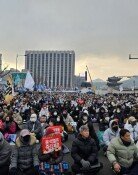Koizumi to Attend Shinto Shrine This Time?
Koizumi to Attend Shinto Shrine This Time?
Posted February. 16, 2002 11:30,
Questions surrounding Japanese Prime Minister Koizumi Junichiro`s accompanying U.S. President George W. Bush at the Shinto ceremony to be held at Meiji Temple during Mr. Bush`s visit to Japan (February 17-18) is stirring controversy.
The U.S. and Japan governments have promoted both leaders attending the service at Meiji Temple on the morning of February 18th. Mr. Bush strongly expressed his desire to `experience traditional Japanese culture` and his intent to form cordial relations with Prime Minister Koizumi.
However, the Meiji Temple is the representative site for the Japanese Shinto religion and article 20 of the Japanese constitution forbids the Prime Minister from attending a formal ceremony at the temple.
Christian, Buddhist, and other Japanese religious organizations have been requesting that the Prime Minister cancel plans to attend the ceremony. These organizations are opposing the visit, saying that it follows upon Prime Minister Koizumi`s visit to the Yasukuni Shrine, the Ise Shrine, and now the Meiji Temple which symbolizes the imperial ideology during Mr. Bush`s visit.
In the case of the Ise Shrine, every Japanese Prime Minister has attended the annual service that honors the ancestor of the imperial household, Amaterasu Omi Kami, arguing that it is a `personal worship attendance` and does not violate the constitution. If, however, Prime Minister Koizumi and President Bush attends the ceremony together, it will be considered an official function and will fall under constitutional law.
Consequently, the Japanese government has distanced itself and stated that it will not accompany the Prime Minister to the service and expressed a very critical attitude toward reinterpreting the constitution. In the past, foreign leaders such as Jimmy Carter and Ronald Reagan visited the Meiji Temple, but Japanese Prime Ministers have not accompanied them.
Young-Ee Lee yes202@donga.com
Headline News
- Joint investigation headquarters asks Yoon to appear at the investigation office
- KDIC colonel: Cable ties and hoods to control NEC staff were prepared
- Results of real estate development diverged by accessibility to Gangnam
- New budget proposal reflecting Trump’s demand rejected
- Son Heung-min scores winning corner kick







